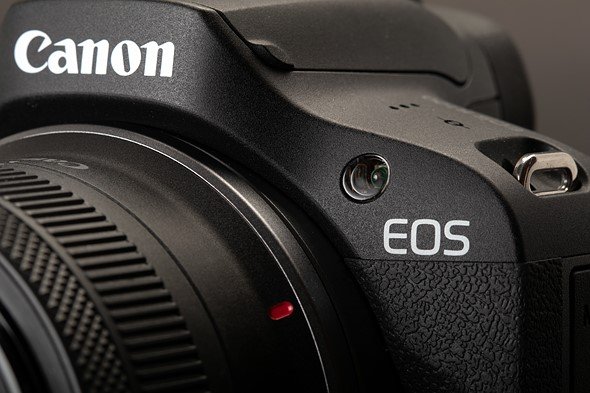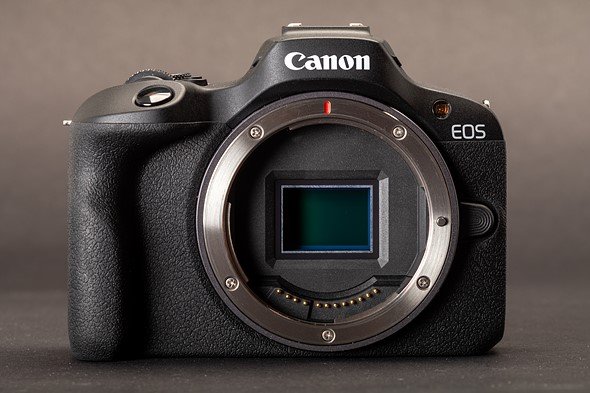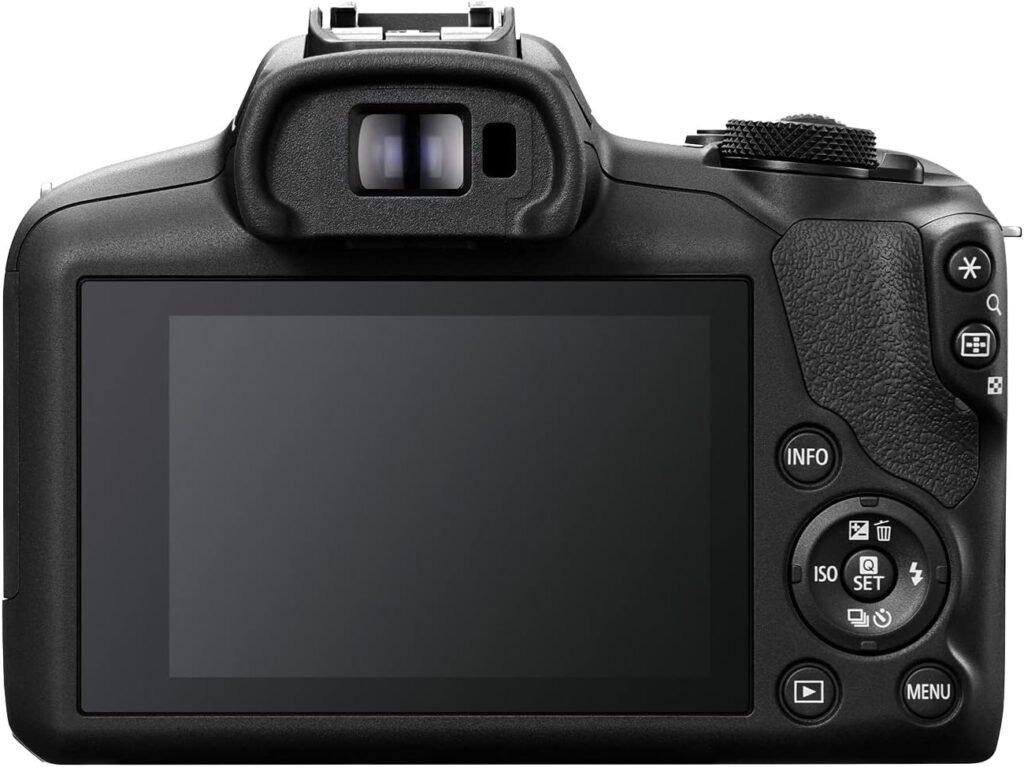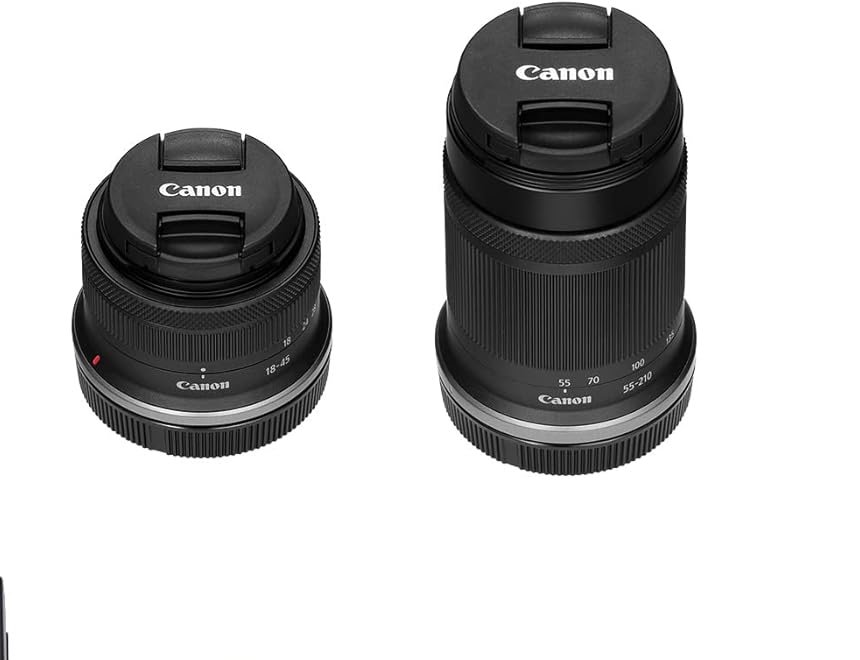Canon EOS R100 review: Rebel-like mirrorless camera, cheap but cuts corners
Table of Contents
The Canon EOS R100 is a compact and budget-friendly mirrorless camera that features a 24-megapixel APS-C sensor with an RF mount, making it an excellent entry point into Canon’s mirrorless system. It provides a significant upgrade over typical smartphone photography, offering greater versatility and image quality.
Key Features:
- 24.2MP APS-C CMOS Sensor: Equipped with Dual Pixel Autofocus, ensuring quick and accurate focusing for both stills and video.
- Burst Shooting: Capture images at 3.5 frames per second with autofocus, or 6.5 frames per second without.
- Video Capabilities: Shoot 4K video at 24 frames per second, utilizing a cropped area of the sensor for enhanced detail.
- High-Speed Shooting: Enjoy fast recording at 120 frames per second in 720p resolution.
- Viewfinder: A 2.36 million dot OLED electronic viewfinder provides a clear and vibrant shooting experience.
- Display: A fixed 3-inch screen with 1.04 million dots, though it is not touchscreen-enabled.
- Audio Input: An external microphone input allows for improved sound quality during video recordings.
Positioned as the most affordable model in Canon’s mirrorless range, the R100 is an attractive option for photographers and videographers alike. It is priced at $479 for the body alone, $599 bundled with the RF-S 18-45mm F4.5-6.3 IS STM lens, and $829 for a kit that includes both the 18-45mm and an RF-S 55-210mm F5-7.1 IS STM telephoto lens. This makes it a solid choice for those looking to explore Canon’s mirrorless offerings without breaking the bank.
Canon EOS R100 review: Rebel-like mirrorless camera, cheap but cuts corners
What is it?

The EOS R100 can be seen as a mirrorless counterpart to the EOS Rebel T7 (also known as the EOS 2000D), sharing many components from earlier Canon models. As a result, it features a sensor, processor, and autofocus technology that feel somewhat outdated by today’s standards. Additionally, the camera has a fixed display that lacks touchscreen functionality, which may seem surprising given the prevalence of touch interfaces in modern smartphones.
Sensor and processor

The R100 features a 24-megapixel APS-C sensor that has been around for several years, closely resembling the sensor found in the EF-M mount EOS M200, M50, and M50 II models. While it may be considered older technology, it still holds its ground competitively, as demonstrated in the following sections.The R100 is equipped with the Digic 8 processor, which, while still effective, is a generation behind the more advanced Digic X chip found in Canon’s latest models. Introduced in 2018, the Digic 8 processor provides solid performance, but users may find themselves missing features like higher frame rate 4K video and advanced subject recognition autofocus.
Autofocus System
The camera utilizes Canon’s Dual Pixel autofocus technology, employing every pixel for depth-sensitive focusing, although it’s an earlier version. While it can detect faces and eyes, if you need advanced detection for animals or vehicles, you’ll have to consider the pricier EOS R50. The R100 includes a dedicated face detection and tracking mode, along with options for spot, single-point, and zone focusing. Without a touchscreen or autofocus joystick, you’ll adjust the focus point using a four-way controller.
Creative Assist Mode
The R100 offers various features aimed at making it easier for beginners to navigate camera settings. However, it lacks some capabilities found in other Canon models, such as modes for multiple exposures, meaning those seeking more advanced creative options will need to look at higher-end models.

A standout feature of the R100 is its Creative Assist mode, which can be accessed in Intelligent Auto mode. This user-friendly interface employs straightforward language that is accessible for novice photographers. For instance, it uses the term “Brightness” in place of “exposure compensation,” and “Background Blur” refers to aperture control. Additionally, users can choose from various color presets like Vivid, Soft, and Black & White to enhance their images.
The R100 offers several scene modes that make it simple to modify settings. For example, in food mode, you can tweak the color tone, essentially adjusting the white balance, while panning mode lets you control the degree of background blur as you move the camera. However, due to the R100’s relatively low burst rate of 3.5 frames per second with autofocus and a quickly filling buffer, it may not perform exceptionally well in sports or panning scenarios.
Vedio
The EOS R100 records 4K video at 24 frames per second with a 1.5x crop from the center of its sensor. This presents several challenges: it limits your ability to achieve wide-angle shots, as the wide end of the included 18-45mm kit lens translates to an effective focal length of about 43mm, which is far from wide. Additionally, this cropping can introduce extra noise, as it essentially utilizes a smaller portion of the sensor. If you enable Digital IS for stabilization, you’ll encounter an extra 1.1x crop on top of that.

For capturing wide-angle footage, the most affordable lens option is the RF-S 10-18mm F4.5-6.3 IS STM, which provides a 24mm equivalent focal length when Digital IS is disabled.
Additionally, there are several other concerns regarding 4K video recording that will be addressed later in this review.
Lens selection

If you’re in search of a variety of RF-mount lenses tailored for APS-C cameras (designated as RF-S), there’s disappointing news: as of now, only four options are available. These include the compact 18-45mm F4.5-6.3 IS STM, the 55-210mm F5-7.1 IS STM priced at $349, the versatile 18-150mm F3.5-6.3 IS STM for $499, and the ultra-wide 10-18mm F4.5-6.3 IS STM available for $329.
While you can also use Canon’s standard RF-mount lenses intended for full-frame cameras, they come with a higher price tag. Additionally, because Canon maintains a private lens mount design, third-party lens options are unlikely to appear soon—though Sigma is expected to release full-frame lenses later this year. You could use an adapter to attach older EF and EF-S lenses from DSLRs, but this can quickly become cumbersome, diminishing the appeal of the R100’s compact design.
Wireless Connectivity
Although the R100 may not have a plethora of features, it does offer comprehensive wireless connectivity options, including Wi-Fi (limited to 2.4GHz) and Bluetooth 4.2.
You can utilize the Canon Camera Connect app (available for both iOS and Android) for various functions such as remote camera control (with or without live view), image transfer, geolocation, and firmware updates. Additionally, the app allows for direct uploads to Canon’s ‘image.canon’ cloud service. During our testing, the Android app worked smoothly and was free of bugs.
Comparison Overview
We’ve already highlighted the key differences between the EOS R100 and its pricier counterpart, the R50. Now, let’s take a closer look at how the R100 stacks up against two of its main competitors.
Comparison Table
| Feature | Canon EOS R100 | Canon EOS R50 | Sony a6100 | OM-D E-M10 IV |
|---|---|---|---|---|
| Launch Price | $479 ($599 with 18-45mm F3.5-6.3 IS) | $679 ($799 with 18-45mm F3.5-6.3 IS) | $699 ($850 with 18-55mm F3.5-5.6 OSS) | $699 ($799 with 14-45mm F3.5-5.6 EZ) |
| Pixel Count | 24MP | 24MP | 24MP | 20MP |
| Sensor Size | APS-C 332mm² | APS-C 332mm² | APS-C 372mm² | Four Thirds 226mm² |
| Autofocus | Dual Pixel* | Dual Pixel II | Hybrid | Contrast |
| Stabilization | Lens only | Lens only | Lens only | In-body |
| Burst Rate | 3.5 fps | 12 fps | 15 fps (electronic) | 11 fps |
| Viewfinder (magnification) | 2.36M dot OLED (0.59x) | 2.36M dot OLED (0.59x) | 1.44M dot OLED (0.70x) | 2.36M dot OLED (0.61x) |
| Rear Screen | 1.04M dot fixed (non-touch) | 1.62M dot fully-articulating | 0.92M dot tilt up/down | 1.04M dot tilt up/down |
| Video | 4K/24p 1.6x crop | 4K/30p no crop | 4K/24p no crop | 4K/30p 1.23x crop |
| Mic / Headphone Jack | Yes / No | Yes / No | Yes / No | Yes / No |
| Connector | USB-C (USB 2.0 / 480 Mbps) | USB-C (USB 2.0 / 480 Mbps) | USB Micro B (USB 2.0 / 480 Mbps) | USB Micro B (USB 2.0 / 480 Mbps) |
| Battery Life (LCD / EVF) | 430 / 340 | 370 / 230 | 420 / 380 | 360 / – |
| Dimensions | 116 x 86 x 69mm | 116 x 86 x 69mm | 120 x 67 x 59mm | 122 x 85 x 49mm |
| Weight (with battery + card) | 356g (12.6oz) | 375g (13.2oz) | 396g (14.0oz) | 383g (13.5oz) |
The table above highlights what you forfeit by opting for the R100 to save around $200: faster performance, a more user-friendly experience through the LCD, and the significant 4K crop previously discussed. If 4K shooting is a priority for you, it’s likely you wouldn’t choose a camera with a fixed, non-touchscreen display, making the EOS R50 a more suitable option.
Canon EOS R100 review: Rebel-like mirrorless camera, cheap but cuts corners
Body and handling

The EOS R100 ranks among Canon’s most compact SLR-style cameras, even outshining the Rebel SL3 (EOS 250D) from 2019 in terms of size. While it shares dimensions with the R50, it is approximately 20 grams (0.7 ounces) lighter, likely due to differences in their LCD designs. The R100’s body is primarily made of composite materials, giving it a lightweight feel. When paired with the RF-S lenses, it achieves a well-balanced setup, although this balance may shift if you decide to use heavier RF lenses.
Compact cameras often feature smaller grips, but Canon has done a commendable job of ensuring the R100 is comfortable to hold. It includes a sufficiently sized thumb rest, although it can be easy to inadvertently press a button. The R100 is equipped with a single control dial and lacks a joystick, which means you’ll need to rely on the four-way controller in specific scenarios, such as when shooting in ‘M’ mode or adjusting the focus point. Most of the buttons can be customized to some degree for added convenience.
The camera’s LCD and EVF are fairly standard, which is expected in a budget model. However, the absence of a touchscreen is a notable drawback, especially considering we are well over fifteen years into the smartphone age. Additionally, the EVF feels a bit smaller than those found in many competitors, although space constraints likely limit its size.
The R100 comes equipped with various input/output options, including micro-HDMI, USB-C, a wired remote connection, and a microphone input. The mic input is a pleasant surprise, considering the R100 isn’t specifically designed for vlogging. While it can’t capture true HDR stills or video, it can display HDR interpretations of its RAW files via HDMI on compatible high dynamic range TVs.
It’s important to note a couple of things about the USB-C port: it operates at USB 2.0 speeds up to 480Mbps, and more significantly, it does not support charging or powering the camera. This port is solely for file transfers, which is a bit disappointing.
The R100 is powered by Canon’s reliable LP-E17 battery, which holds 7.5 Wh of energy. Thanks to this efficient design, the R100 offers impressive battery life for its category. Officially, it can achieve up to 430 shots when using the LCD and 340 shots with the viewfinder in ‘power saving’ mode, which dims the screens and puts the camera to sleep after a period of inactivity. However, the industry-standard rating often underestimates the actual number of shots you can take, and it’s common to exceed the specified count by a significant margin.
Switching to ‘smooth’ mode, which boosts the display’s frame rate, will decrease battery life, as will frequent use of Wi-Fi or Bluetooth features.
Canon EOS R100 Mirrorless Camera
Canon EOS R100 Mirrorless Camera: pricing
| Item | Price |
|---|---|
| Canon EOS R100 Mirrorless Camera | $599 |
| Canon EOS R100 with 18-45mm Lens | $499 |
Canon EOS R100 review: Rebel-like mirrorless camera, cheap but cuts corners

